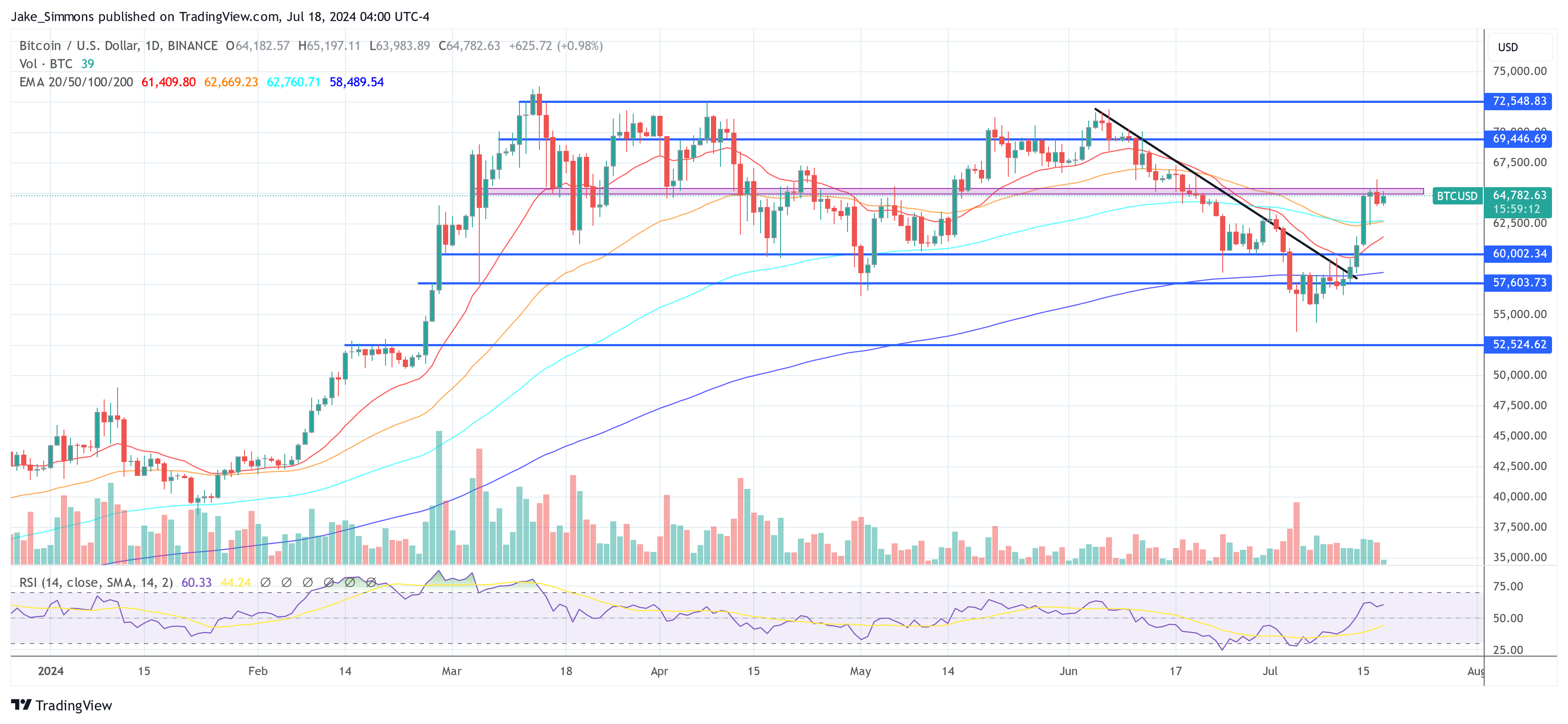[ad_1]
In a forecast shared via a YouTube video, Joe Burnett, Senior Product Marketing Manager at Unchained Capital, articulates a strong case for Bitcoin reaching a valuation of $750,000. According to Burnett, the market may be substantially underestimating Bitcoin’s potential this cycle, often losing sight of its broader context within the global financial ecosystem.
Why Bitcoin Could Soar To $750,000
Burnett begins by addressing a common oversight in market analysis, which typically juxtaposes Bitcoin’s current cycle against historical performances without accounting for its evolving market context. “I think it’s possible that many people are underestimating Bitcoin this cycle,” Burnett stated, emphasizing the necessity to perceive Bitcoin through the lens of its relative position in the total global wealth.
A key component of Burnett’s argument is the HODL model created by the Rational Root, which he discussed extensively on the podcast “What Bitcoin Did.” The model pinpoints a critical inflection in 2020, coinciding with Bitcoin’s third halving—an event that reduces the number of new bitcoins generated and thus awarded to miners for verifying transactions.
Related Reading
Burnett elucidates, “This model is fascinating because it shows a logical inflection point that occurred in 2020 around the third halving. It highlights that illiquid supply as a percentage of total supply held at an all-time low percentage, and it’s been slowly climbing ever since.” According to him, this reflects a shift towards Bitcoin being increasingly held by long-term holders rather than circulated by miners and speculators.
Post-2020, Burnett argues, Bitcoin has entered a new phase characterized by a diminishing supply of liquid coins. “Until the third halving, Bitcoin was really just in the process of distributing coins via proof of work mining; almost 90% of all coins were mined by 2020,” he explains. The subsequent reduction in new coin generation post-halving has spurred a gradual transition from a freely circulating supply to a more tightly held asset.
Burnett’s forecast also leverages a comparative analysis with gold, traditionally viewed as a robust store of value. He challenges this notion by highlighting the flaws in gold’s economic mechanics, particularly its annual supply increase of 1% to 2% which introduces continuous sell pressure. “Gold has a negative feedback loop considering it’s not perfectly scarce like Bitcoin. Hundreds of billions of dollars of new gold are mined annually,” Burnett points out, arguing that this diminishes gold’s appeal as an investment.
Related Reading
Conversely, he describes Bitcoin’s halving events as a “positive feedback loop,” where the decrease in new supply every four years inherently drives price appreciation, stimulating new waves of adoption. “The amount of new Bitcoin being mined gets cut in half. This repeats until no newly released Bitcoin are mined,” he adds, suggesting a built-in scarcity that bolsters its value over time.
Zooming out to a global scale, Burnett references the near quadrillion-dollar total global wealth, within which Bitcoin’s current market cap is just a fraction. He contends that Bitcoin’s market share is poised for significant expansion, potentially commanding a sizable portion of global wealth.
This stands in sharp contrast to more conservative expectations by various experts which barely see Bitcoin crossing the $100,000 threshold in the near future. “With all that being said, the ‘concept of diminishing returns’ could very easily be flawed. We live in a world with nearly 1 quadrillion dollars of total global wealth and Bitcoin is 0.1% of that,” Burnett states.
He concludes with a quote from Michael Saylor: “All your models will be broken,” and added “anything below the size of gold is absurdly early. Gold parity is now at about $750,000 per Bitcoin, meaning if the market size of Bitcoin just reached the market size of gold.”
At press time, BTC traded at $

Featured image created with DALL·E, chart from TradingView.com
[ad_2]
Source link



